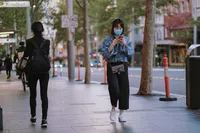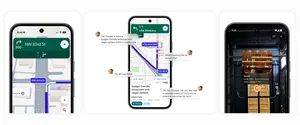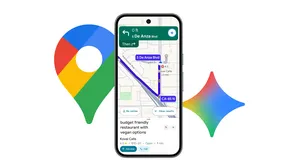Navigate safely with new COVID data in Google Maps

More than one billion people turn to Google Maps for essential information about how to get from place to place–especially during the pandemic when safety concerns are top of mind. Features like popular times and live busyness, COVID-19 alerts in transit, and COVID checkpoints in driving navigation were all designed to help you stay safe when you’re out and about. This week, we’re introducing the COVID layer in Maps, a tool that shows critical information about COVID-19 cases in an area so you can make more informed decisions about where to go and what to do.
How it works
When you open Google Maps, tap on the layers button on the top right hand corner of your screen and click on “COVID-19 info”. You’ll then see a seven-day average of new COVID cases per 100,000 people for the area of the map you’re looking at, and a label that indicates whether the cases are trending up or down. Color coding also helps you easily distinguish the density of new cases in an area. Trending case data is visible at the country level for all 220 countries and territories that Google Maps supports, along with state or province, county, and city-level data where available.Country and state level data in South America
State-level data in the midwestern U.S.
County-level data in Florida
Country and state-level data in India
Tap the layers button to see COVID data
Select “COVID-19 Info” from the bottom of the layers menu
Where we get the data
Data featured in the COVID layer comes from multiple authoritative sources, including Johns Hopkins, the New York Times, and Wikipedia. These sources get data from public health organizations like the World Health Organization, government health ministries, along with state and local health agencies and hospitals. Many of these sources already power COVID case information in Search, and we’re now expanding this data to Google Maps.
While getting around is more complicated these days, our hope is that these Google Maps features will help you get where you need to be as safely and efficiently as possible. The COVID layer starts rolling out worldwide on Android and iOS this week.






